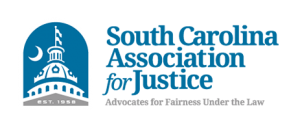There were 5,932 motorcyclist traffic fatalities in 2021. (NHTSA, Motorcycles). Even though motorcycles are only 3% of registered vehicles, 14% of traffic fatalities are motorcyclists. (NHTSA, Motorcycle Safety).
Some types of motorcycle crashes are especially likely to be deadly. Contact Greenville motorcycle accident lawyer Bobby Jones in the wake of a serious wreck.
Understanding the Deadliest Types of Motorcycle Crashes
The deadliest types of motorcycle crashes involve front impact to the motorcycle at a high rate of speed. In addition, they are likely to involve high-risk behavior like driving under the influence of alcohol or not wearing a helmet.
8 of the Deadliest Types of Motorcycle Crashes
1. Head-on, front impact
In fatal motorcycle crashes, the motorcycle is struck from the front 75% of the time. In a head-on crash, the motorcycle is usually struck by a driver traveling in the opposite direction.
A head-leaning crash may be especially likely to cause brain trauma, skull fractures, and brain contusions. There are several common reasons that head-on motorcycle accidents occur, including drifting over the center line, improper passing, and a loss of vehicle control.
2. Intersection, side impact, T-bone
35% of motorcycle fatalities occur at intersections. When a vehicle enters an intersection without the right of way, they may collide with another vehicle already present in the intersection.
The result may be a deadly motorcycle crash with side impact. Harm may occur to the motorcyclist because of the initial impact and from secondary trauma when striking the ground.
3. High-speed
The greater the speed of any vehicle involved in a motorcycle accident, the more likely a fatality is to occur. As speeds increase, so do the forces involved in a crash. Speed limits are set for safe travel. When drivers speed, they increase the likelihood of a collision and the likelihood that a crash will be deadly.
4. High-side
In a high-side motorcycle crash, the rider falls to the oppose side of their motorcycle. The rider is thrown away from the motorcycle often with a large amount of force. The underlying cause is often a loss of traction followed by suddenly regaining traction with the wheels out of alignment.
A high-side crash gets its name from the rider being thrown over the bike. Because of the violent trajectory, the rider may be thrown into the air, suffering blunt force impact and fatal injuries.
5. Commercial vehicles
Commercial vehicles are, on average, much larger and heavier than motorcycles. Even though large trucks are only 5% of registered vehicles, they are involved in 9% of fatal traffic crashes, including deadly motorcycle crashes.
6. Alcohol use, drunk driving
NHTSA reports that motorcyclists in fatal crashes have higher rates of alcohol impairment than other drivers. 27% of motorcyclists involved in a fatal crash have alcohol impairment, compared to 23% for passenger cars and 3% for large trucks. Alcohol impairment is set at a bodily alcohol content of .08 g/dL or greater.
In addition to fatality rates for all types of motorcycle crashes, 41% of motorcyclists killed in single-vehicle crashes were impaired by alcohol.
7. Rider not wearing a helmet
In states that require helmet use, 55% of deaths were suffered by those not wearing a helmet. In states where helmets are required, 9% of motorcyclist deaths are those not wearing helmets.
NHTSA says that in 2017, motorcycle helmets saved 1,872 lives. They say hundreds more could have been saved if everyone wore a helmet. They say that 37 of every 100 motorcyclists killed in a crash who was not wearing a helmet could have been saved with a helmet. Because helmet use is higher in states with universal helmet laws, these laws are effective in reducing the number of deadly motorcycle crashes.
In South Carolina, in 2021, 64% of motorcyclists killed in traffic crashes were not wearing a helmet. The United States average is 39%.
8. Rider without a valid motorcycle license
17% of car and truck drivers involved in fatal crashes are operating without a valid license at the time of the crash. For motorcyclists involved in fatal crashes, the number rises to 36% not having a valid motorcycle license. The figures evidence the importance of having a valid license and the skill to operate a motorcycle safely.
What Types of Trauma Make a Motorcycle Crash More Deadly?
There are certain types of injuries that may make a motorcycle crash more likely to be deadly.
Brain injury, spinal cord damage, severe bleeding, severe burns, lacerations, and internal organ damage may result in a fatality. Some injuries may be visible, but some deadly injuries may not be immediately apparent. Severe injuries may lead to fatality in any type of motorcycle accident.
What types of motorcycle crashes are not the deadliest?
Here are some factors that are not statistically likely to make a motorcycle crash more deadly:
- Bad weather: Most crashes occur with clear skies and in clear weather conditions.
- Age: Motorcycle crashes occur across all age groups, with an average age of 43 for those killed.
- Day of the week: While about half of motorcycle fatalities occur on the weekend, deaths occur in significant numbers all days of the week.
- Engine size: Fatalities occur among riders with motorcycles of varying engine sizes, including 501-1,000, 1,001-1,500, and 1,501 and greater (cc).
- Interstate roads: 92% of fatal motorcycle accidents occur on roads other than interstates. Non-interstate arteries, both principal and minor and non-interstate collector roads, are the leading places where deadly motorcycle crashes occur.
- Rear-impact: Only 7% of deadly motorcycle accidents result from a rear-impact collision.
Legal Help for a Fatal Motorcycle Accident
In whatever way a motorcycle accident results in a fatality, the victim deserves justice. At Bobby Jones Law, we represent people who have lost a loved one in a deadly motorcycle accident.
Lawyer Robert “Bobby” Jones can evaluate what caused the crash and how it resulted in a fatality. Our team works to prove your case and your right to financial compensation.
To talk to a lawyer and get legal help, contact us.
Article sources: NHTSA, Traffic Safety Facts, Motorcycles; NHTSA, Motorcycle Safety; NSC, Injury Facts, Large Trucks.


















